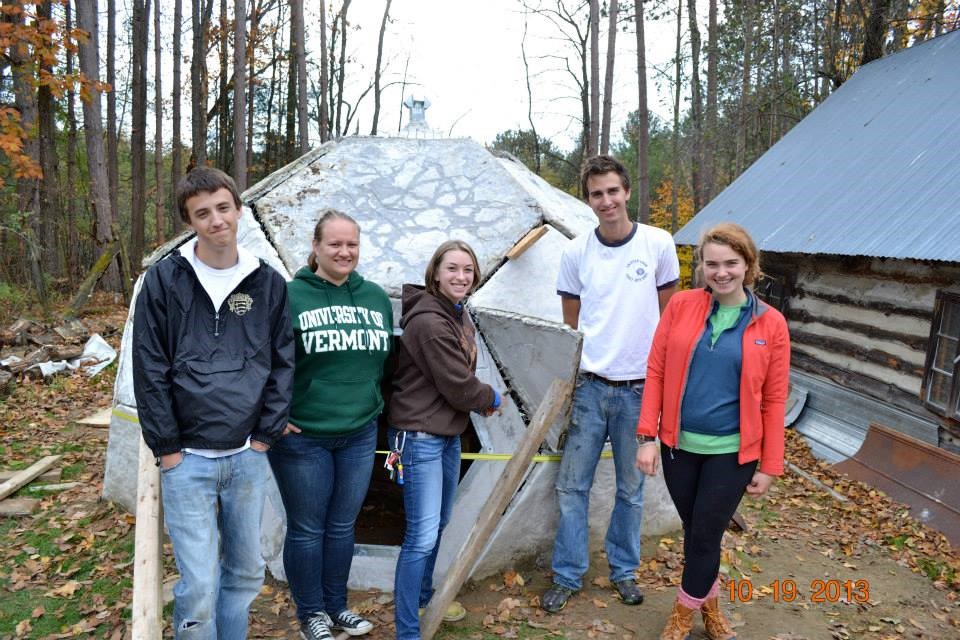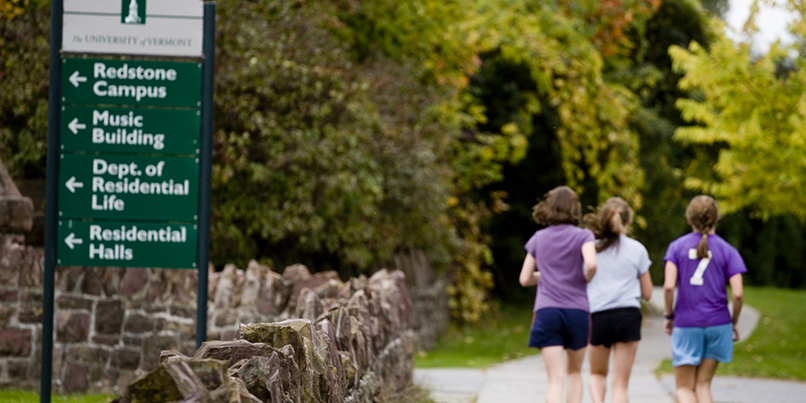By Matthew Brand
Can a group of high school students with little engineering experience start an international project building structures out of nothing but carpet, concrete, and fencing wire? At the UVM/GIV Engineering Institute, hosted by University of Vermont’s College of Engineering and Mathematical Sciences, a group of high school students did just that.
High School Engineering Projects Focused on Building Sustainable Shelter Systems
Hundreds of millions of people in the developing world suffer from a lack of adequate housing to protect them from natural disasters. Often, the shelters that are meant to protect these people are inadequate and can end up harming their inhabitants rather than sheltering them during a disaster.
Currently, most shelter systems able to safely withstand a natural disaster are not economically feasible or sustainable because of their high cost and lack of locally available materials and labor. Along with a former director of the UVM/GIV Engineering Institute, a group of 15 high school students helped design and build a prototype shelter for under $200. This shelter built using sustainable materials and minimal skilled labor offers protection from extreme weather events and earthquakes.
The structure is constructed in the shape of half a soccer ball, and nicknamed, “The Dome”. Fencing wire embedded in each panel provides reinforcement and points for structural connection. The Dome was further reinforced by filling the gaps between panels with a mixture of sheep’s wool and cement, and waterproofed with roofing tar. Each panel is molded from the ground, reducing the need for complex formwork. Each panel weighs approximately 50 to 100 pounds, and about 3/4 inches thick. Further information on the construction of the Dome is available through Structure Magazine, at http://www.structuremag.org/?p=7568.
The Vermont Haiti Project
Through a connection with the Vermont Haiti Project, a builder from Haiti inspected the prototype Dome and provided feedback with regard to cultural acceptance and applicability of the structure. This feedback informed the design of a second prototype to be built in the shape of a half cylinder, with conventional doors and windows opening up on each side.
Through collaboration between UVM’s student chapter of Engineers Without Borders and former UVM/GIV Engineering Institute students and counselors this structure was partially constructed in the fall of 2014.
This project began with in collaboration with students at the UVM/GIV Engineering Institute, and is just one example of a creative design with real world applications that students are exposed to during the Institute.
In mid-June 2015 several members of the design and building teams plan to travel to Haiti with the Vermont Haiti Project to construct a half cylinder structure in a community in Duchity. They hope to build the structure through a workshop on this low-cost building technique emphasizing that it can be adapted and built to accommodate a variety of needs.
Matthew Brand is a UVM senior majoring in environmental engineering.





